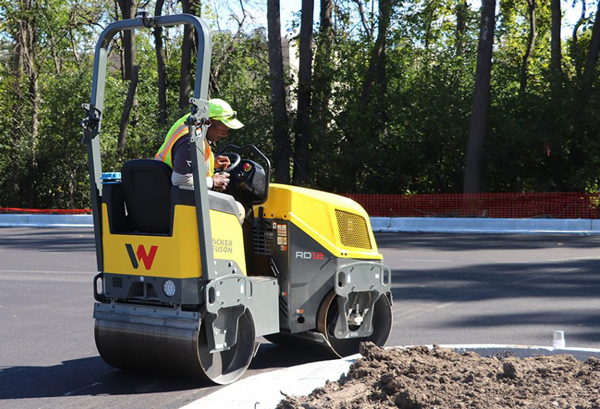Most building sites require a sturdy ground to operate on. The earth must be crushed such that there are no pockets of air underground to interrupt the operation. Special construction equipment is required to adequately crush and smooth the ground for this to function. The road roller is one of the most prevalent forms of compaction equipment. Road rollers have a lengthy history, with the earliest being drawn by a horse and utilized for agricultural purposes. In fact, because they were propelled by a steam engine, contemporary rollers are still referred to as steam rollers. Due to their differences, one roller will not perform the same as another, like a sheepsfoot roller is not the same as a pneumatic tire roller. Understanding the many types of rollers is essential for any building job.
- Cylindrical Rollers – They are conventional in the sense that they are quite light and are pushed by a person. Cylindrical rollers are mostly utilized for minor and private jobs such as yard work. Cylindrical rollers have a diameter of one meter and are often composed of iron, stone, or concrete.
- Grid Rollers – These are rollers with a network of steel bars that form a grid-like pattern on the steel drum. For increased contact pressure, the grid can optionally be ballasted with concrete blocks or steel attachments. These rollers are typically dragged or pulled behind a tractor or other large machine. For compaction work, the grid pattern on the cylinder drum creates a high contact pressure with less kneading action. As a result, they work best on well-graded, coarse soils, worn rocks, and subgrade and sub-base road structures.
- Pneumatic Rollers – Also known as pneumatic tire rollers, are a big ride-on roller having numerous rows of rubber tires on the front or back end. Rubber tires give 80% coverage and equal pressure over the breadth of the tire. They are often used for pavements and can aid in the smoothing and polishing of a project, but they are also excellent for cold-laid bituminous or cold mixed pavements and layers of loose soil.
- Sheepsfoot – Also known as padfoot or tamping rollers, have several rectangular-shaped lugs, or “feet.” They’re excellent for compacting soil and silty clay during road construction. The weight of the sheepsfoot drum can be increased by ballasting it with water or moist sand, or by installing steel parts onto it, resulting in a more efficient compacting process. Similarly, any project that involves wet clay or other fine-grained soils at large depths should employ this sort of roller. With a pneumatic roller, you may finish off regions compacted by sheepsfoot rollers.
- Double Drum – The tandem, also known as a double drum roller, features one steel drum in front and one in behind. The roller rolls when the two drums do. The tandem roller’s effectiveness stems from the two drums large stretches of a highway may be flattened and paved swiftly and effectively. These rollers are ideal for flat or gradual surfaces such as asphalt, but they are not advised for anything specialized due to their lack of traction.
- Single Drum – Among of the most typical types of heavy-duty machinery are three-wheeled or single drum rollers. When most people think of road rollers, they see a three-wheeled roller. They usually feature a steel drum in the front and two unique wheels in the back to avoid most flat tires. S ingle drum rollers can function in tighter places and on more specialized applications. They’re fantastic for laying foundations for structures and paving highways or sidewalks, but they won’t roll over some terrain because to the greater weight in the front.
- Vibratory Rollers – Vibratory rollers are nearly identical to smooth wheel rollers. The roller will shake as it compacts and flattens the surface. Since earth, asphalt, and concrete all have natural empty spaces, they can cause a building to distort and sink, creating structural problems. Employing a vibratory roller on your construction project will assist maintain the structural integrity of the structure. Crushed rock or gravel are two more forms of soil that vibratory rollers excel at compacting.
Selecting the appropriate roller for your building project is critical, since the wrong one might result in poor craftsmanship, pockets of air that sink the structure, or uneven areas that can be harmful. A few criteria must be considered while determining the best type of roller. The first is the project’s duration. Depending on the length, renting a roller may be less expensive than purchasing one.
You’ll also need to determine the sort of soil that will be compacted. A different roller is required for fine-grain sand than for clay. Also, if you’re paving asphalt, you’ll need to decide whether a static or vibratory roller is preferable. At first look, determining whether you need a smooth or padfoot roller for your project may appear tough, but understanding about the two rollers may undoubtedly help you choose the proper sort of roller for your building job. Rollers are excellent at upgrading and repairing surfaces, making them among the most reliable heavy equipment to utilize on a project. Knowing the advantages of each roller might help you choose the best one for you.






